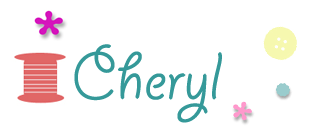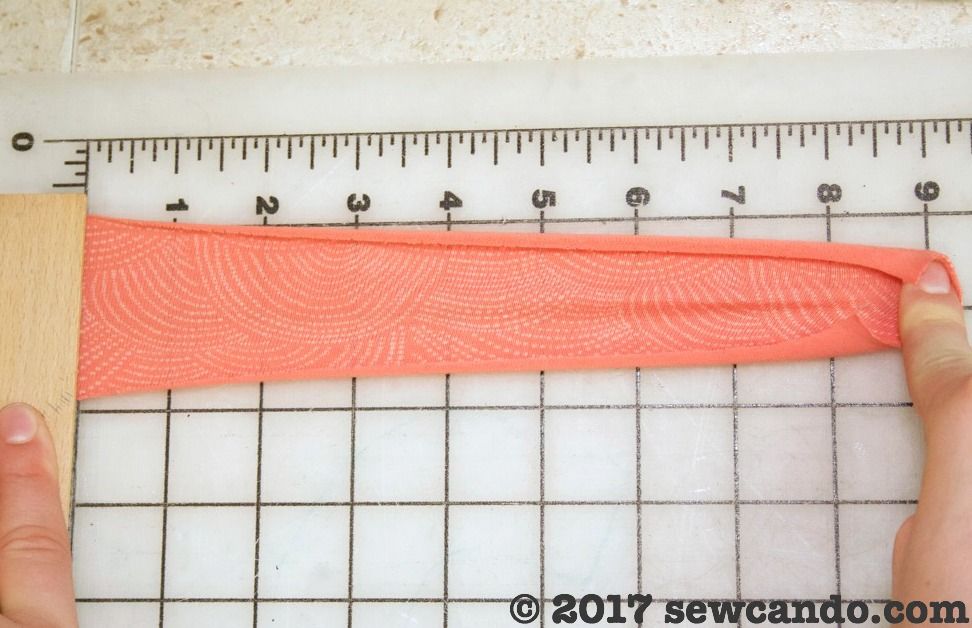Sewing with knits is not as hard as most people imagine. It doesn't involve major sewing skills and you do not need a serger. A basic sewing machine, a little knowledge and few key notions are all it takes. Really! You truly can start sewing up your own pjs, t-shirts, dresses leggings & undies in no time! Today I'm sharing just how easy it is and offering up a chance to win a bundle of awesome knit fabric too.
Getting Started Sewing With Knits:
Use the right notions! If you're new to sewing or have mainly sewn with woven fabric, sewing knits may seem tricky or frustrating, but by following a few key tips, stretchy, smooth seams are simple.
Stretchy stitches - this is the other key element to sewing knits. Basic zig-zag, triple stitch, triple zig-zag, overcasting/knit stitch all work great, as do a few others. Unlike normal straight stitches, these provide give and strength which are key when sewing with knit fabric. Sewing straight stitches means the fabric can't stretch without breaking the thread. No one wants that!
It is totally worth the time to dig out your machine's manual and see what stretch-friendly stitches you have. Even the most basic machines have several. Usually the manual will also tell you what each stitch is suited for too, so you probably have more options than you expect. Here are just a few:
For more details on what these particular stitches look like and best applications, you can check out my past post on Ways to Sew Knits Without A Serger.
Walking foot - This specialty presser foot grips fabric from the top (instead of just the feed dogs underneath), so the even hold keeps layers from creeping or stretching while you sew. Unfortunately, most machines do not come with one. It makes a big difference when sewing knits, so it's worth getting one and they are not very expensive. Added bonus: it's great for quilting & woven sewing too!

Nylon thread - this is optional, but can be handy. This wooly looking thread is what I use in my bobbin whenever I sew things like kid's clothing. Regular polyester thread on top, this stuff in the bobbin. It adds a little extra stretch for seams that will be pulled a lot, like neck or leg holes. And a cone of it will last forever.

Lastin - a clear elastic is also great for stabilizing seams and for gathering knits since it's also stretchy, just stretch it as you sew to make perfectly even gathers:
What about edges & finishing?
There are many ways to handle hems, cuffs and openings that will rival a store-bought look. None are super complicated.
Stretch twin needles - these are great for a professional finish on hems & necklines and have that all important stretch too. Two even rows of stitches on the front:
And a zig-zag bobbin thread connecting them underneath:
Not all twin needles are the same though. Many chain stores sell them, but it's the stretch variety that's needed for knits. I've had to order those online or get them at local sewing stores, but they work better because they're meant for knits.
I've also had greater success with narrower twin needles to avoid the fabric sticking up between the rows and creating a "tunneling" effect. Using pressure-sensitive fusible tape also helps prevent that.
 |
| Two of the width options for stretch twin needles |
Pressure Sensitive Fusible Tape - this stuff is my go-to for finishing sleeves and hems. There are many brands and names for it but it's basically a paper-packed fusible that comes on a roll. Some varieties are adhesive, some are iron-on. It comes in a variety of widths too.
You apply it to the wrong side along the fabric edge and then peel away the paper, fold it over so the sticky side presses against the fabric, then sew. It stabilizes the fabric so it won't pull or stretch while sewing and means you don't need to pin it either and it means you'll measure a perfect edge without having to whip out a sewing gauge or ruler. I've found it to be a lifesaver and use it any time I'm folding knit edge under to hem.
Elastic Binding and Fold-Over-Elastic (FOE) - are great for flexible binding on things like sleeve edges, waistbands and legholes. These work just like bias tape to encase the raw edge of knit fabric and when sewn with one of the aforementioned stitches, they offer full stretch with the fabric.
Rib knit - is also useful for doing cuffs and neck banding. It tends to have more stretch than most knits, so it helps to keep openings like necklines and sleeve holes to lie flat against the body instead of gaping or sticking out awkwardly.
This means they work just as well for things like leggings, as they do for baby clothes or flowing loose tops. Plus, the good stretch recovery means they can also be used to do cuffs and banding too. No need for searching for solid rib knits or additional fabrics for your project:
How do you determine a fabric's stretch?
Ex. If you measure a 6 inch piece:
a Rafflecopter giveaway

To figure out the stretch percentage, just take width of your fabric when stretched to its maximum and divide by the width of your fabric when unstretched (minus 1).
Ex. If you measure a 6 inch piece:
and it stretches to 9 inches, 9 divided by 6 is 1.5, then subtract 1. This equals .5 which is 50%. Your stretch percentage is 50%.
Follow these tips and sewing with knits can be enjoyable instead of stressful and the results will look more professional, not homemade.
Now how about a chance to win TWO yards of each of these Dear Stella knit fabrics?
a Rafflecopter giveaway


















I'd sew a cute summer skort because I live in skorts all summer long
ReplyDeleteI need to start sewing cute baby stuff for my first-born, due in September. I'm one of the many who has been scared to sew knits! But I have some good quality knit fabric in my stash and I'm almost ready to cut into it. Probably a kimono baby top to start!
ReplyDeleteJust got a cute top pattern that would look great in this fabric
ReplyDeleteRebecca G
What a wonderful tutorial. Thank you for this!
ReplyDeleteI love the flamingo print! Thank you!
ReplyDeleteHow timely, thank you so much for your tips! I finished a simple dress yesterday, copying one of my own. My upper hems are so much better than the bottom, having used interface strips on them. Because of the tight curves, I did not iron the tape , just set it under the hem as I went. Now I will try my pattern again, after making some bias binding, & pick up a twin needle for knits as well. I want to perfect my own underwear pattern - so tired of the prices!
ReplyDeleteI'm thrilled to hear this will help and you're right, once you get the hang of sewing knits yourself, it can be such a savings!
DeleteHow timely, thank you so much for your tips! I finished a simple dress yesterday, copying one of my own. My upper hems are so much better than the bottom, having used interface strips on them. Because of the tight curves, I did not iron the tape , just set it under the hem as I went. Now I will try my pattern again, after making some bias binding, & pick up a twin needle for knits as well. I want to perfect my own underwear pattern - so tired of the prices!
ReplyDeleteThanks for the tutorial!
ReplyDeleteGlad to share it:)
DeleteThank you for some great information. Flamingo like to go to school! These fabrics would make a great, and comfortable, skirt for me to wear to school. The kids would enjoy them too!
ReplyDeleteI would make leisure wear. At home, I live in knits. I have not sewn any since I broke my serger. Thank you for reminding me my sewing machine is quite capable.
ReplyDeleteIt totally is Sue. Confession time: I actually have a serger I've never used! I got it just as I learned how do sew knits on my sewing machine. It's so easy to do on my machine and the instructions for just threading the serger were so complicated and require dragging it out of a cupboard & moving everything just to use it, so I've just kept using my machine.
DeleteThis is so helpful! I've been wanting to make some knit tops and have been considering buying a serger. This means I can spend the money on fabric instead!
ReplyDeleteAnd who doesn't love that?!?
DeleteI would make a romper for my 1 year old son.
ReplyDeleteThis is by far the best article I've read about knits! Thank you!
ReplyDeleteThat's just what I hoped to hear Gabby! I'm so happy to be able to share what I've learned:)
DeleteI just made a t shirt out of knits and love the stay tape. I would like to make an outfit for my dogs from your pretty fabrics.
ReplyDeleteViking, though pricey, has a good reputation among quilters and others who work their sewing machines a lot. Users report that Viking is the best sewing machine because of its durability and it is easy to use. Viking was the first company to develop the first writing sewing machine.free motion quilting machines
ReplyDeleteThis is a great place to start to learn to sew. Follow all the steps right from reading sewing machine reviews, to buy one and get started. One can opt for beginners sewing machine to start.
ReplyDeleteTo determine which brand you’ll want for the machine you need, it’s important to look at the basics of what each brand can provide. best sewing machine 2019
ReplyDeleteVery Nice Article, Raksha Bandhan is just around the corner on 11 August 2022. Have you planned to celebrate this festival? Here available Raksha Bandhan Poster Maker Application will help throughout the festivals for your business promotion. Some People also celebrate Rakhi on 12 August 2022 So, now take double benefits of the app.
ReplyDeleteCool tutorial
ReplyDeleteGreat guide! Sewing with knits can be tricky, but your tips make it much easier. I love the suggestion to use a walking foot—it really helps prevent stretching. The step-by-step instructions are clear and beginner-friendly. Thanks for sharing such useful advice! Looking forward to more sewing tips from you! Sewing Machine Reviews: Top 4 Brands & Buyer’s Guide
ReplyDelete